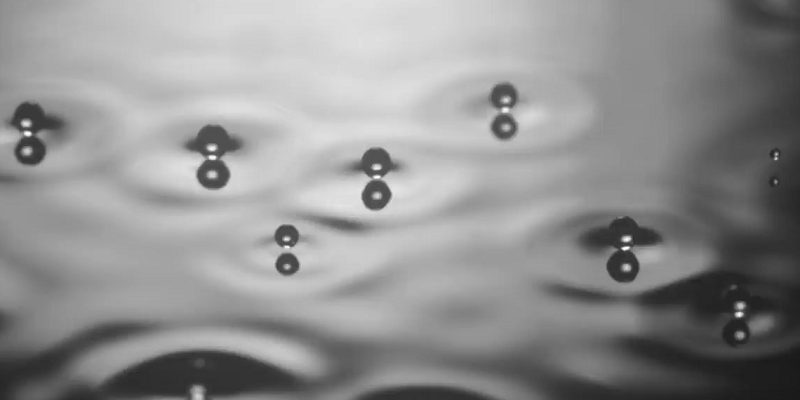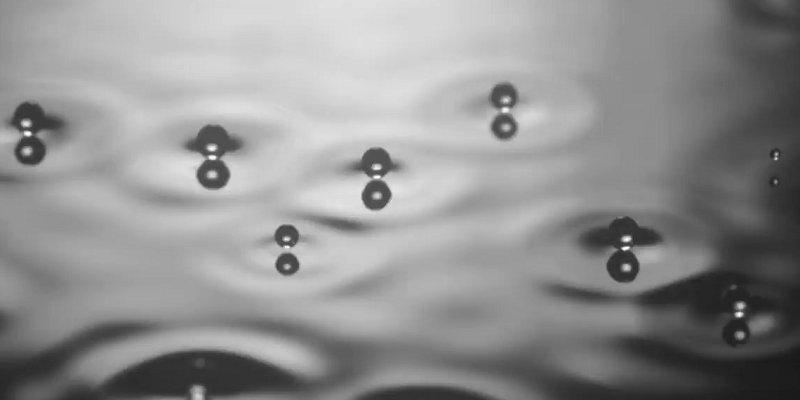Video—Stop and Go Droplets
Vibrating a container of silicone oil at about 80 Hz allows droplets of the liquid to bounce repeatedly on the surface and interact with the waves they generate. These interactions can propel the droplets across the surface, a phenomenon called walking. Now Rahil Valani and colleagues from Monash University in Australia have shown that applying two frequencies simultaneously leads to new and more complex movements, such as stop-and-go motion and transitions between a “crystal” and a “gas” of walkers. Such behavior is of interest in part because the particle-wave interaction mimics several quantum phenomena.
In the stop-and-go case, the droplets alternate between stationary bouncing and random scurrying. To generate this behavior, the researchers set the vibration frequencies to 80 Hz and 39.5 Hz, so that the lower frequency is a bit less than half of the upper frequency. As a result, the phase difference between the two waves changes slowly over time and produces motion when it is within a certain range and stopping when outside that range. By tuning the lower frequency towards 40 Hz, the researchers could extend the time that the droplets spend in the stopped state.
This research is published in Physical Review Letters.
–David Ehrenstein
David Ehrenstein is a Senior Editor for Physics Magazine.





